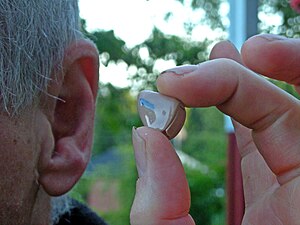America has a choice. Healthcare can either be part of the free market – or not. Or it can remain a hodgepodge mixture – as it already is.
According to Abraham Lincoln, “I am a firm believer in the people. If given the truth, they can be depended upon to meet any national crisis. The great point is to bring them the real facts.”
America, you, the people, need to decide. Education is the first step.
Healthcare has two primary elements: products and services. Today we’ll discuss products.
Healthcare products include items like crutches, wheelchairs, hearing aids, eye glasses, artificial hips, splints, medications, lab tests, etc.
We all understand that manufacturers need to make a profit. If it costs $5 in raw materials to manufacture a jacket, we don’t argue when they sell it wholesale for $10. We understand they have to cover their development costs, their labor, their rent. Nor do we argue when retailers mark the price up to $20 – they, too, need to cover their overhead – and hope to make a profit as well. The mark-up also allows retailers to discount their price if desired, and is a cushion against inventory losses, shoplifting, etc.
But how is it that a drug that costs $4 this year may have been $100 last year? Why do hearing aids cost $3000 when a home computer is $300? How can over-the-counter reading glasses cost $2 and prescription glasses $200? What does it cost to manufacture an artificial hip?
A curious thing happened recently. I received a notice from one of the two local hospital systems regarding updated lab test pricing. Of course, I expected the prices to be higher. Lo and behold, the prices had been cut – chopped, in fact – some by as much as 70%! The reason? They desired to be more competitive in the local market.
Now that’s one example of the free market at work. If certain medical items were deregulated – hearing aids, for example – watch how fast the price would drop. The situation is complex and could not be solved overnight, but with a little ingenuity, it could be solved!
There are too many questions to be addressed in a single day’s discussion, but let’s address just one: hearing aids. Perhaps there was a time when the industry required FDA regulation, but I would argue, that day is past. In this era of cell phones and iPods, the free market could manufacture inexpensive hearing aids with various settings, perhaps using online hearing evaluations. In fact, why not have Verizon get in the business? With the computer-literate baby-boomer generation reaching Medicare age, in a free market the problem of $3000 hearing aids would take care of itself.
(True, some patients would require help from an audiologist, but likely not the majority. And I apologize to the audiologists and all those making a living on $3000 hearing aids who may need to find a new line of work.)
Potential savings if 1% of 35,000,000 Medicare recipients saves $1000 on a hearing aid: 350,000 x $1000 = $350,000,000.
(Note: Medicare does not pay for hearing aids.)
© Cynthia J Koelker, MD – All Rights reserved



